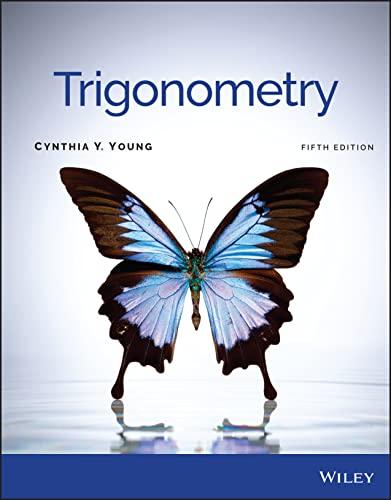Question
An article summarized results from a national survey of2402Americans age 8 to 18. The sample was selected in a way that was expected to result
An article summarized results from a national survey of2402Americans age 8 to 18. The sample was selected in a way that was expected to result in a sample representative of Americans in this age group.
(a) Of those surveyed,1126reported owning a cell phone. Use this information to construct a 90% confidence interval estimate of the proportion of all Americans age 8 to 18 who own a cell phone. (Round your answers to three decimal places.)
(,)
Interpret the interval.
We are confident that 90% of the proportion of all Americans age 8 to 18 who own a cell phone is within this interval.
We are 90% confident that the proportion of all Americans who own a cell phone is within this interval.
We are confident that the proportion of all Americans who own a cell phone is within this interval at least 90% of the time.
We are 90% confident that the proportion of all Americans age 8 to 18 who own a cell phone is within this interval.
(b) Of those surveyed,1524reported owning an MP3 music player. Use this information to construct a 90% confidence interval estimate of the proportion of all Americans age 8 to 18 who own an MP3 music player. (Round your answers to three decimal places.)
(,)
Interpret the interval.
We are confident that 90% of the proportion of all Americans age 8 to 18 who own an MP3 player is within this interval.
We are 90% confident that the proportion of all Americans who own an MP3 player is within this interval.
We are 90% confident that the proportion of all Americans age 8 to 18 who own an MP3 player is within this interval.
We are confident that the proportion of all Americans age 8 to 18 who own an MP3 player is within this interval at least 90% of the time.
(c) Explain why the confidence interval from part (b) is narrower than the confidence interval from part (a) even though the confidence level and the sample size used to compute the two intervals was the same.
The sample proportion in part (a) is further from 0, thus increasing the value of the estimated standard deviation of the sample proportion.
The sample proportion in part (b) is further from 0.5, thus reducing the value of the estimated standard deviation of the sample proportion.
The sample proportion in part (b) is further from 0, thus increasing the value of the estimated standard deviation of the sample proportion.
The sample proportion in part (a) is further from 0.5, thus reducing the value of the estimated standard deviation of the sample proportion.
You may need to use the appropriate table inAppendix Ato answer this question.
Step by Step Solution
There are 3 Steps involved in it
Step: 1

Get Instant Access to Expert-Tailored Solutions
See step-by-step solutions with expert insights and AI powered tools for academic success
Step: 2

Step: 3

Ace Your Homework with AI
Get the answers you need in no time with our AI-driven, step-by-step assistance
Get Started


